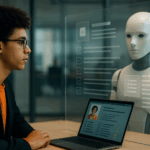Let’s go back to school – but let’s do it differently, please

After a blighted year, the children are going back to school in 2021.
Never before have so many youngsters stayed away from school for so long. The pandemic year should be seen as a petri dish in which we conducted a long experiment about the nature of education. The results are in – and there is much to ponder.
So much was exposed by the coronavirus. The lamentable underfunding of public education revealed the delivery gap between education for the rich and the poor. The children of the poor basically lost a year; the children of the affluent migrated quickly to online learning.
The rigidity and inflexibility of traditional learning was also exposed. The best institutions and teachers made the leap to new delivery platforms quickly – they learned how to run virtual classrooms at speed. The majority, however, were left stranded. Technology was a mystery to many teachers; virtual pedagogy was a step too far for them.
As the big return to in-place learning takes place in 2021, let’s make sure we have learned the big lessons of the corona dispersion.
The first, surely, is that our schools all need to become safer places. Hygiene and distancing protocols must be mandatory – and policed strictly – until widespread global vaccination has occurred. This must not just be a temporary measure; the lessons of COVID-19 must be taken into perpetuity. There are more viruses to come, and the next ones may not be so gentle on the young. Just like enhanced airport security measures lasted long after the 9/11 atrocity that brought them into being, a degree of virus protection should become a matter of course and routine.
Next, we must feel outrage at the inequality gap in education. Governments that have failed to make education universal should hang their heads in shame, or have their butts kicked at the polls. The children of the poor should also have access to devices, broadband internet and online platforms. To fail in this would be to leave your future human capital mired in the equivalent of a stone age.
Third, every educational institution and teacher must understand: the future of education will be heavily virtual. There is no going back. The best delivery will be blended, combining the best of at-school and in-cloud learning. For those heavily and exclusively invested in bricks and land, an upheaval is coming. Yes, much of teaching and learning will continue to be done in the flesh in the traditional manner – but so much will not. The winners will be those who can create the best blends of the customary and the creative – and evolve their business models accordingly.
Fourth, we can finally break the archaic tradition of education being something done to you at a certain age and in a certain place. Learning must now become lifelong and continuous, occurring in a steady stream. Coming-of-age education will of course remain crucial; but no school or university can provide the re-skilling and perpetual learning that most humans will need in their lives. That must come from a multiplicity of sources, old and new.
Lastly, could employers please see the writing on the wall? For too long they have taken the lazy route of letting schools and universities act as their recruitment filter to sift through the talent available to them. Elite credentialism is responsible for much of the inequalities of opportunity and outcome that have so fractured our societies. It also does nothing for the employers themselves, confining their talent pool to clones drilled to conform. Ever wonder why your organization can’t innovate? Look around you and see all the heavily credentialed box-tickers, note-takers and map-readers you have recruited and promoted over the years. Will they change the game for you?
It’s an exciting time. The norms and practices of education have barely changed for centuries, but a great acceleration is about to occur. Education may finally reach the masses in cost-effective ways; it may finally break the bounds of place and time; it may become fluid and versatile. Many traditional players will renew and refresh their approaches; many upstarts will make bold new offerings.
Let’s go back to school, then, but let’s start doing it rather differently. Oh, and did you think today’s column was just about your children, dear reader? Not at all. It was also about you – as a parent, an employer and most importantly, a lifelong learner. Where will this great acceleration find you – at the wheel, or coughing in the dust?
(Sunday Nation, 3 January 2021)

Buy Sunny Bindra's new book
The X in CX
here »
Popular Posts
- NY’s wake-up call to the old guardNovember 9, 2025
- Save your strength for repairsNovember 2, 2025
- How to listen, really listenNovember 16, 2025
- Empathy is the missing code in CXOctober 26, 2025
- Is AI hiring your company into oblivion?November 23, 2025















